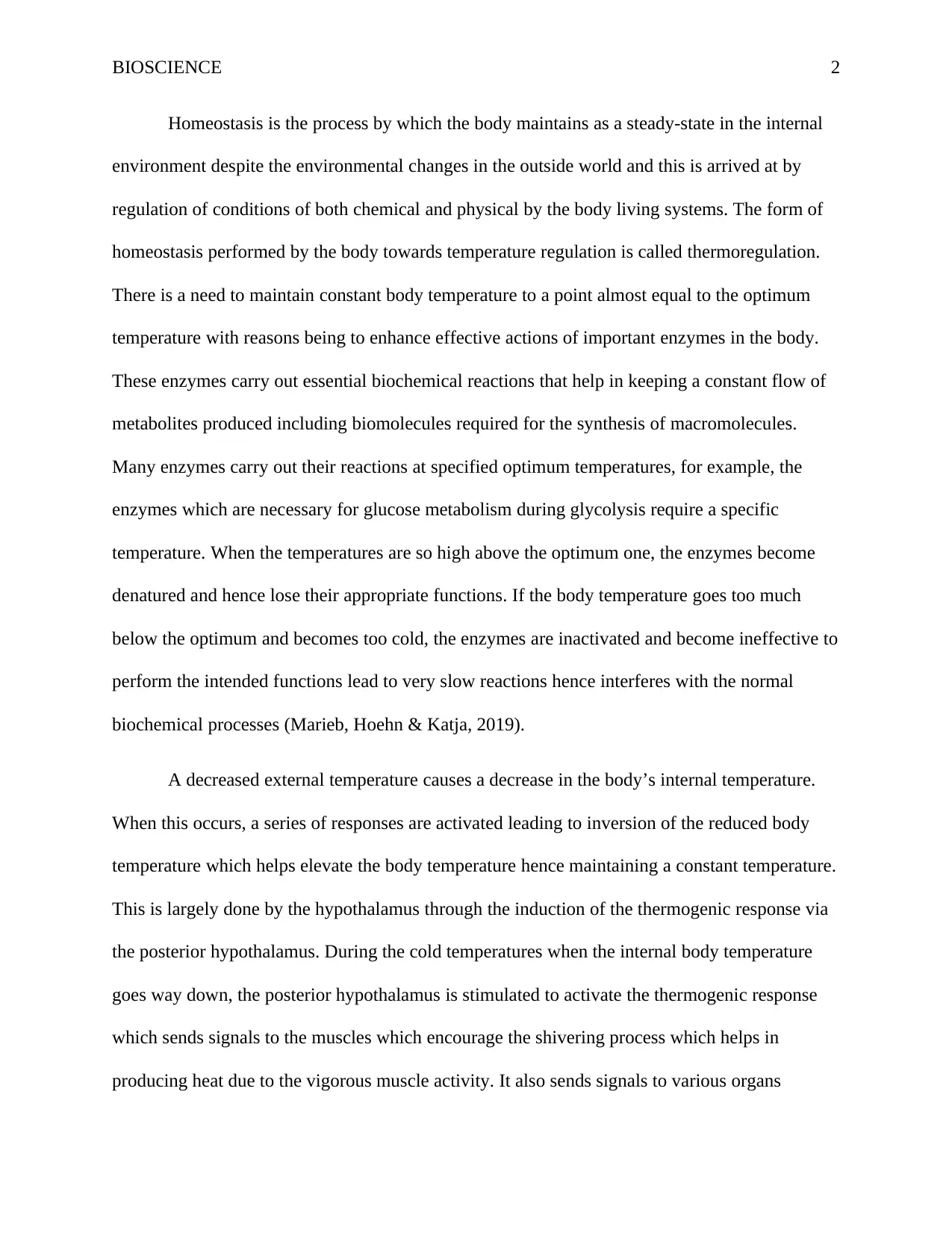BIOSCIENCE 2: Report on Homeostasis and Temperature Regulation
VerifiedAdded on 2022/08/26
|4
|564
|17
Report
AI Summary
This report delves into the intricate processes of homeostasis and temperature regulation within the human body, specifically in the context of BIOSCIENCE 2. It explains how the body maintains a stable internal environment despite external fluctuations, focusing on thermoregulation. The report highlights the significance of maintaining a constant body temperature for optimal enzyme function, crucial for biochemical reactions. It further explores the body's responses to decreased internal temperatures, detailing the role of the hypothalamus in activating thermogenic responses. These include shivering, the production of heat by various organs, vasoconstriction, and hormonal thermogenesis involving the thyroid gland. These mechanisms collectively work to elevate body temperature, ensuring the continuation of essential physiological processes. The report references key scientific literature to support its findings.
1 out of 4






![[object Object]](/_next/static/media/star-bottom.7253800d.svg)